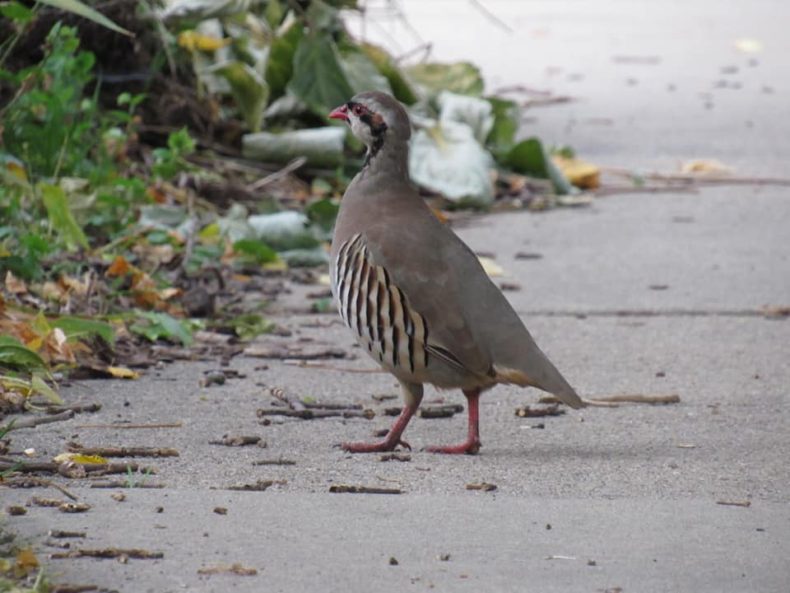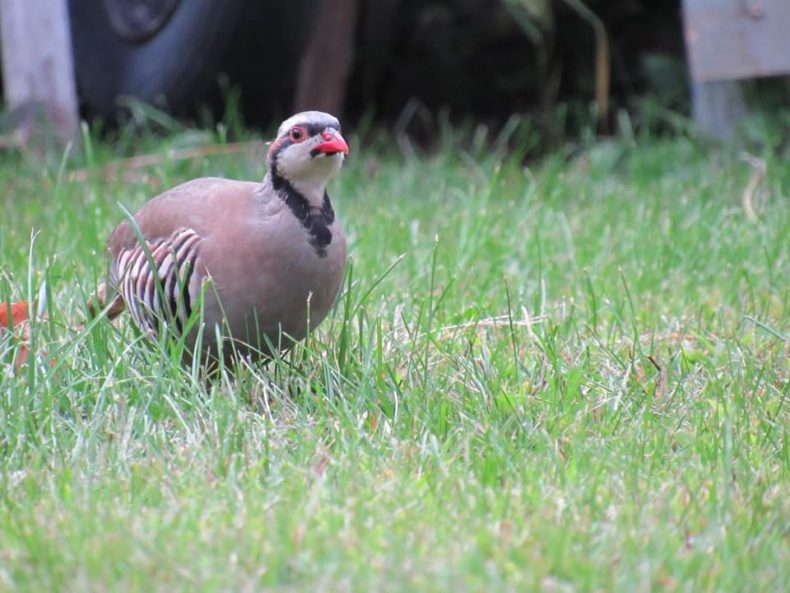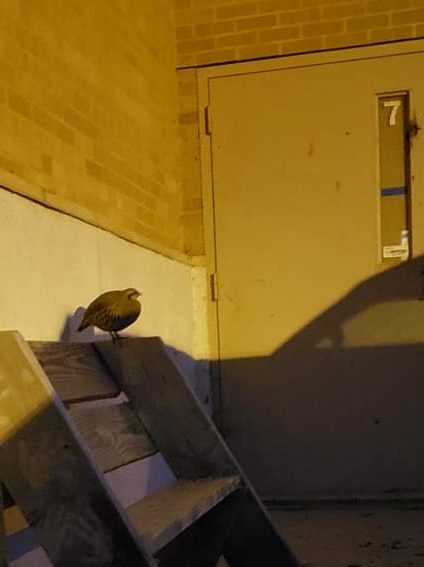
The first recorded sighting of the strange birds occurred in August. A man posted a picture on my Facebook neighborhood group: Plump, chicken-esque body. Red beak. Black-and-white striped wings. Bandit mask over the eyes. Commenters were quick to ID the bird. Definitely a chukar. More photos revealed there were at least five roaming the streets. My neighbors were instantly smitten. “May we keep them?” one woman asked. “I love them.”
Chukars, native to the Middle East and southern Asia, take their name from the noise they make, a low “chuk, chuk, chuk.” They were introduced to the United States in the 1800s as a game bird, but they can’t survive Wisconsin winters. Quincy Markowitz, who runs the Farm Bird Sanctuary in Edgerton, WI, saw the post and offered to help catch the birds.
Easier said than done. Although chukars spend much of their time foraging on the ground, they can — and will — fly if startled. “They are pretty skittish,” Markowitz says. She managed to nab one with her bare hands in September after several failed attempts. But the other chukars would prove more elusive.

Kristine Drake, a mail carrier, joined the hunt in September after a chukar showed up in her driveway. “THE CHUKAR IS IN OUR YARD RIGHT NOW,” she posted on Facebook. “WHAT DO I DO????” Commenters advised that she needed to tail the chukar until it settled in for the night. That would be her best chance of nabbing it.
So Drake, still in uniform, began to follow. The chukar would waddle along and then suddenly break into a sprint. Drake did her best to remain inconspicuous while still keeping tabs on the bird. “It was very contorted weird running — being hunched over, trying not to alarm it, jumping over things,” she says. “Puts you right in touch with what it’s like to be a cat.”
Finally, two and a half hours later, a neighbor showed up with a net. But the pair tried to throw it too soon and startled the bird, which flew onto a roof and then disappeared.

Drake got her second chance in October. The sun was already beginning to set, and the chukar seemed to be settling in for the night on a bench. Drake was about 10 feet away when she dropped into a crouch to rest her legs. When she stood up, the bird flew away.
The next evening, Drake found the chukar in her driveway again. She followed it to the same bench. Her heart was pounding. “Tonight’s the night,” she recalls thinking. She reached out to a neighbor who had caught chukars before and asked for assistance. The woman arrived with nets and quickly inspected the bird’s position. One leg was raised and its head was tucked under a wing. They were good to go. Drake’s assistant dropped down and began slowly crawling toward the chukar from the side. The net was just inches above the bird’s head when the woman’s ankle cracked. The chukar exploded into the sky.
A few days later neighbors managed to trap another chukar with a soccer net on a roof. But Drake’s chukar remains at large. It’s late December now, and there’s snow on the ground. Tomorrow the temperature will plummet to single digits. “Part of me wants to believe that it is capable of surviving somehow,” Drake says. Each night she walks a loop around her house just to check. “Maybe somehow I’ll be lucky.”
I can relate. As we come to the end of this stupendously horrific year, we’re all desperate to believe that miraculous outcomes are possible. Maybe tomorrow will be the day we turn the corner. Maybe tomorrow we’ll step out into the cold, dark winter and there she will be. Gloriously alive.
***
Jafar and Zazu, the two chukars that were caught, are living at Tiny Hooves Sanctuary in Union Grove, Wisconsin.
Images courtesy of Kristine Drake.